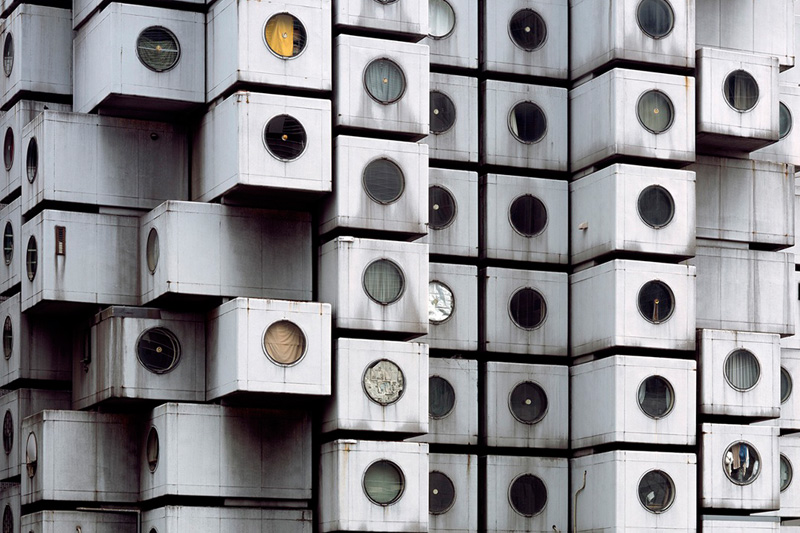
Balázs Irimiás
Films: Nakagin Capsule Tower: Japanese metabolist landmark on the edge of destruction (Yamazaki Rima, 2010, 58’); Intercalary spaces (Damien Faure, 2012, 50’)
Saturday 8 March – 21:00
The Nakagin Capsule tower is a landmark of Japanese architecture; even those know it, for which metabolism does not extend beyond their own diet. They might not remember its name, only the iconic 3D dominos hidden behind a highway in Tokyo.
The movement that pinned Japanese architecture onto the world map – Metabolism – had the power of joint thinking, joint dreaming and joint vision of built environment, popping up during the accelerated post-war mass construction, possibly in response to the largely futile architectural attitude of the era. These visions usually stay on the planning desk, unless they emerge during exceptional economic growth periods. Not incidentally the oil economies of the Middle East were utterly fascinated by the movement, nonetheless Japan remained the place for most practical realizations. Nakagin Capsule, the Japanese Metabolist icon is now on the verge of demolishing.
Prominent theoreticians worldwide have referred to this Japanese golden era of architecture from the sixties ever since. Being unique, as a group of courageous and experienced architects mutually proliferating each other, came up with their dreams of futuristic grandeur collectively.
The object representing the central philosophy of Metabolism is the brainchild of their youngest member that time, Kisho Kurokawa. He regarded the Nakagin capsules a sine qua non of Metabolism, going to extremes in saving it from being vanished (he bought 8 capsules himself) disregarding economical and maintenance feasibility.
Now, as the destruction becomes an utter menace, the movie goes after the human aspect. I won’t promise a U-turn, nonetheless it will take the most radical conservationists for a short trip to the other side at least.
Urban gaps
Extension of living spaces to the public realm, siege of the public domain are getting more of an issue in Hungary nowadays. But Japan is the country where it has been up for many decades, due to their population density, cultural background and their worldview.
These ideas gain popularity during economic crisis rather than economic growth – like what we are experiencing right now.
The French documentary lines up some unexpected characters – the self-taught insectologist, the ornithologist or the PE teacher – next to the architect experts of omnipresent and functioning nanoscale city spaces, proving all the same. These tiny gaps in the urban fabric deserve our attention, even if we are not necessarily aware of their existence.
The segment of contemporary Japanese architects who design multi-storey residences on land that was left behind, being too small for a bicycle parking, express their views, like the founders of Atelier Bow-wow or Life & Shelter, who are credible and passionate on their field. The unmaintained urban gaps are important, they are part of our closet, check the movies, they are actually beautiful.
